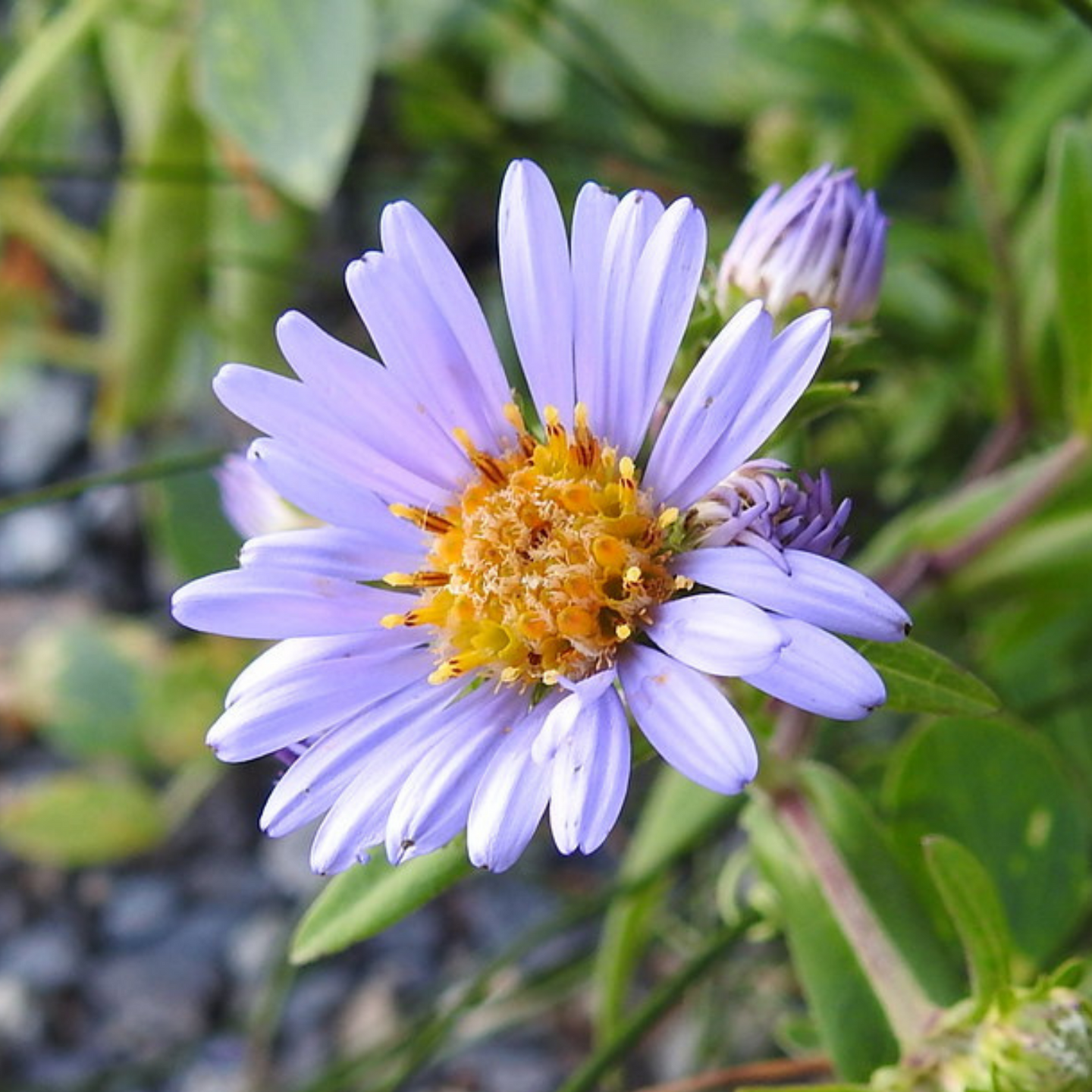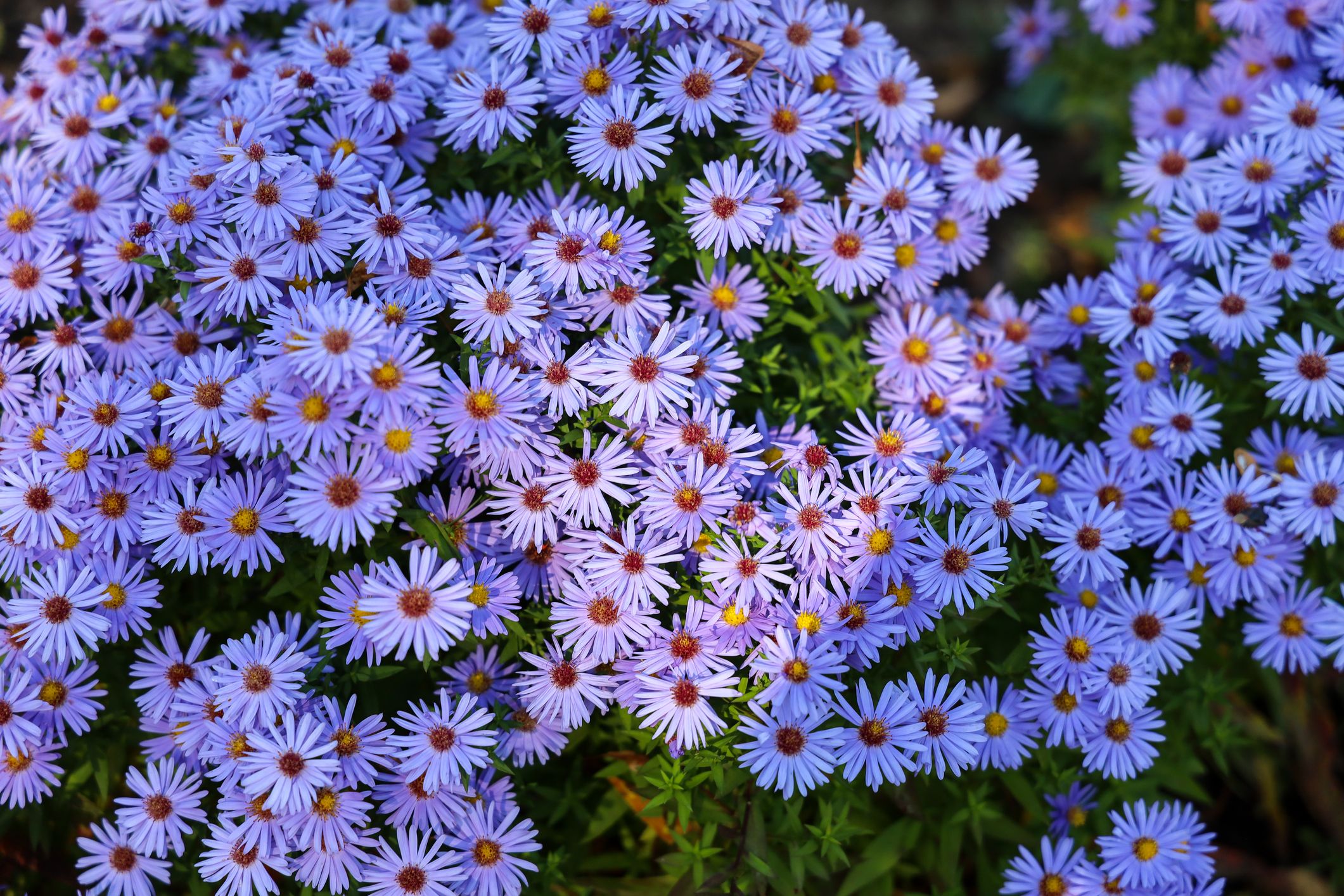The Wonderful World of Asters: More Than Just Pretty Flowers
Ever spot those daisy-like flowers popping up in late summer and fall, adding splashes of purple, pink, white, or blue to the landscape? Chances are, you’ve encountered an Aster. These aren’t just any old wildflowers; they’re a huge group of plants, part of the Asteraceae family – a massive clan that also includes sunflowers and daisies. The name “Aster” itself comes from the Greek word for “star,” and it’s easy to see why when you look at their starry blooms.
A Plant with a Long History and Many Names
Humans have been noticing and using Asters for ages. Native Americans had various medicinal uses for different Aster species, from root concoctions for pain relief to leaf poultices for skin issues. It’s pretty cool to think about how these seemingly simple flowers played a role in traditional remedies.

Over time, as folks started gardening more, Asters found their way into cultivated spaces. Plant breeders got their hands on them, and that’s why we have such a wide variety of Aster colors, sizes, and bloom times today. You might hear them called different things depending on where you are – Michaelmas daisies are a common name, especially for those that bloom around late September.
Why Asters are a Gardener’s Best Friend (and Maybe Yours Too!)
There are loads of reasons why gardeners (and maybe you, soon-to-be Aster expert!) love these plants. For starters, their late blooming period is a huge plus. While other flowers are fading as summer ends, Asters are just getting started, providing a much-needed burst of color and life to the garden in autumn. This late show also makes them incredibly important for pollinators. Bees, butterflies, and other beneficial insects rely on these late-season nectar sources to fuel up before winter. Planting Asters is like throwing a welcome party for these essential critters.
Beyond their ecological benefits, Asters are generally pretty easy to care for. They’re not overly fussy about soil as long as it drains well, and most varieties prefer full sun, although some can handle a bit of shade. Once established, they’re also relatively drought-tolerant, which is always a bonus for busy gardeners. Plus, they come in a range of heights and growth habits. You can find compact, bushy types perfect for borders and containers, as well as taller, more sprawling varieties that look fantastic in cottage gardens or naturalized areas.

Diving Deeper: The Different Kinds of Asters
With so many Aster species and cultivars out there, it can get a little overwhelming. But that’s part of what makes them so interesting! You’ve got New England Asters ( Symphyotrichum novae-angliae), known for their vibrant purple and pink flowers and sturdy stems. Then there are New York Asters (Symphyotrichum novi-belgii), which offer a wider range of colors and slightly smaller blooms. And that’s just scratching the surface! There are smooth asters, aromatic asters, and many more, each with its own unique characteristics.
The flower shapes themselves can vary too. While many have that classic daisy-like appearance with a yellow center and colorful petals, some have more delicate, ray-like petals, while others have a fuller, more pom-pom shape. This diversity means there’s likely an Aster out there to suit just about any garden style and color preference.
Propagating Asters: Spreading the Aster Love

If you fall in love with your Asters (and who wouldn’t?), you might want to propagate them to expand your collection or share them with friends. Luckily, there are a few ways to do this. Division is a common and easy method, especially for established clumps. You simply dig up the plant in spring or fall and carefully divide the root ball into smaller sections, making sure each section has healthy roots and shoots. Replant these divisions, and you’ll have new Aster plants!
You can also grow Asters from seed, although some cultivars might not come true to type. Sow seeds indoors a few weeks before the last frost or directly outdoors in spring. Another method is stem cuttings, which involves taking cuttings from new growth in spring or early summer and rooting them in a suitable medium.
Potential Problems (and How to Handle Them)
Like any plant, Asters can occasionally run into a few issues. Powdery mildew, a white, powdery fungus on the leaves, is a common problem, especially in humid conditions. Good air circulation and avoiding overhead watering can help prevent this. Aster wilt is another fungal disease that can cause wilting and death. Choosing disease-resistant varieties and practicing good garden hygiene are important.
Sometimes, you might find pests like aphids or spider mites on your Asters. These can usually be controlled with insecticidal soap or by simply hosing them off the plants. Overall, though, Asters are generally pretty resilient and not too prone to serious problems, especially if they’re grown in conditions they like.
Asters: A Beautiful and Beneficial Addition
Asters are more than just pretty faces in the late-season garden. They provide vital resources for pollinators, add a splash of color when many other flowers are fading, and are generally easy to care for. Their long history and diverse varieties make them a fascinating group of plants to explore. Whether you’re a seasoned gardener or just starting out, there’s likely an Aster that will capture your heart and thrive in your space. So, why not consider adding some of these starry wonders to your garden? You might be surprised by the joy and life they bring.
Conclusion
Asters stand out as valuable additions to any landscape, offering a late-season spectacle of color and serving as crucial resources for pollinators preparing for winter. Their ease of care, diverse forms, and rich history make them a rewarding choice for gardeners of all levels. By understanding their needs and appreciating their benefits, we can cultivate these starry blooms and enjoy their beauty year after year.
Frequently Asked Questions About Asters
Are Asters annuals or perennials?
Asters are generally perennials, meaning they come back year after year. However, some varieties might be treated as annuals in colder climates if they aren’t reliably hardy.
When do Asters typically bloom?
Most Asters bloom in late summer and fall, providing color to the garden when many other flowers have finished their show. The exact bloom time can vary depending on the species and cultivar.
Do Asters need full sun?
While Asters generally prefer full sun (at least 6 hours of direct sunlight per day) for the best flowering, some varieties can tolerate partial shade. However, they may produce fewer flowers in shadier conditions.
Are Asters good for attracting pollinators?
Absolutely! Asters are fantastic for attracting a wide range of pollinators, including bees, butterflies, and other beneficial insects, especially in the late season when other nectar sources are scarce.
How tall do Asters typically grow?
Aster Plant
